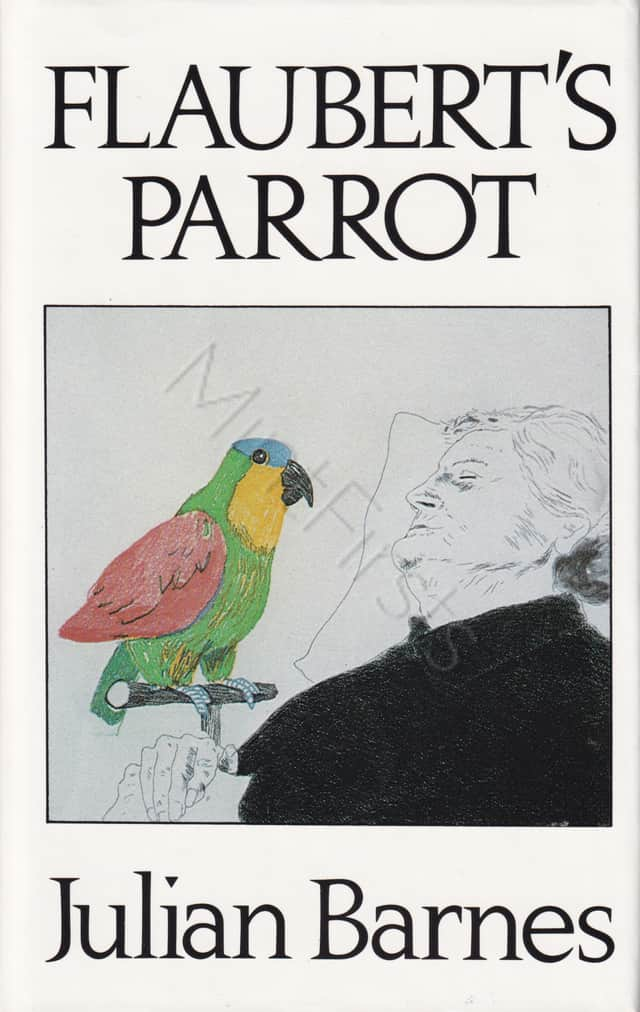Established
2004
Relaunched
2024
Our booksHow we tradeAbout usCredits & thanksYour account
- Home page
- Our books
- How we trade
- About us
- Credits & thanks
- Your account
- Your cart
MENU
Flaubert's Parrot
Signed first edition of Julian Barnes's Flaubert's Parrot

Julian Barnes
First edition. 8vo. Pp. 190, [2 (blank)]. Lime-green cloth boards, lettered and ruled in gilt to spine. Cream dustjacket, printed in black, with David Hockney's cover illustration 'Félicité Sleeping with Parrot' (£8.50 net stated to front flap). Signed by Author to title page. Very Fine, in a brightly coloured dust jacket.
A small number of copies were issued in a first-state dust jacket with a misprinted colour illustration. Some of these errant jackets, slightly darker in tone, were distributed with review copies, while the remainder were pulped. Published in a print run of 3,000 copies.
Author's third novel, originally serialised in The London Review of Books. The chapter 'Emma Bovary's Eyes' first appeared, in an edited form, in Granta: Best of Young British Novelists, issue 7 (1983). Shortlisted for the 1984 Booker Prize. Winner of the 1985 Geoffrey Faber Memorial Prize and the 1986 Prix Médicis in France.
The author's chef d'oeuvre, an ingenious amalgam of fiction, literary history, criticism and biography, centred around a retired doctor's attempts to trace the mysterious whereabouts of the stuffed parrot Flaubert once borrowed from the Museum of Rouen while researching his short story 'Un coeur simple'. A displacement activity while he tries to come to terms with the suicide of his adulterous wife, the parallels between Barnes's doomed characters and those of Flaubert's masterpiece, Madame Bovary (1857), are all too apparent.
Preceding its U.S. publication by Knopf the following year, Barnes published a follow-up essay, "The Follies of Writer Worship" in The New York Times, which riffs on the narrator's search for truth in the novel. "[Author's] most celebrated book... hailed as an exemplary postmodernist text." –Literary Encyclopedia
special feature
signed
edition
first edition
format
hardback
publisher
Jonathan Cape
published in
London
publication year
1984
ISBN
0224022229
height × width
22.5 × 14.5 cm
genre
literary fiction
language
English
binding style
cloth
binding state
original binding
condition . . .
mint
of jacket
mint
GBP£ 320
EUR€ 373
USD$ 428
ref.L89 U74